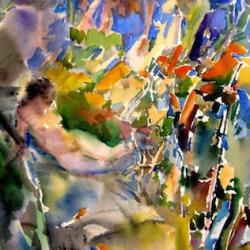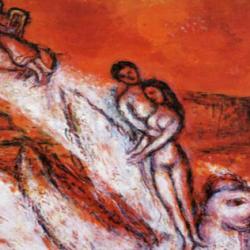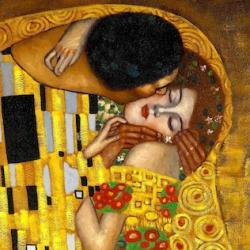Many of the goddesses of ancient paganism were domestic types. The goddesses were mother goddesses, or weaver goddesses or sometimes associated with higher arts of civilization – writing and other cultivated elite arts. Tikva Frymer-Kensky notes ( In the Wake of the Goddesses: Women, Culture and the Biblical Transformation of Pagan Myth ) : “In this mythic depiction of women-in-the-family, social roles are not portrayed by human women, whether legendary or real [as in Genesis!]. They are modeled by goddesses, figures whose importance in the universe is known and revered by their worshippers. The fact that these potent deities play the same roles in the divine realm that women are expected to play in society gives a powerful seal of approval to these family roles. When modeling is done by the divine, the modeling does not simply illustrate; it authorizes and approves what it models. This is a powerful two-edged sword. On the one hand, divine modeling for women’s family roles gives women esteem within these roles so that these roles become a source of self-satisfaction and nourishment. On the other hand, this same divine modeling makes cultural attitudes and stereotypes part of the realm of the sacred, lending powerful support to these attitudes and inhibiting change.”
In addition to these domesticated goddesses that modeled what good girls would have to do, many ANE cultures had at least one untamed, wild goddess.
In Sumeria, her name was Inanna, and she is best known to us as Ishtar, her Semitic name. Frymer-Kensky (p. 25): “She represents the nondomesticated woman, and exemplifies all the fear and attraction that such a woman solicits. She is the exception to the rule, the woman who does not behave in societally approved ways, the goddess who models the crossing of gender lines and the danger this represents.” She has no domestic function, and she is often depicted roaming the streets, restless. She is sexually promiscuous. Frymer-Kensky (p. 29): “Inanna’s freedom from domestic encumbrances and the restlessness that it engenders may also account in part for the ferocious energy with which she confronts gods and humans. She represents a woman not occupied with social responsibilities, like a man in many of her wants and capabilities, both threatening and assuring the social order. She is dangerous, fearsome, and threatening because of her freedom, and yet, at the same time, appealing and attractive. In her lack of encumbrances, Inanna is free to be the ultimate femme fatale.” Fittingly, she is also often a black goddess.
As many commentators have noted, this ANE background sharpens the surprising twist of the Song of Songs. The Bride of the Song is not a “nice” girl. Throughout the Song, we have hints that the Bride doesn’t remain within the easy confines of social convention. Her escapades in the streets in two scenes in the Song link her with Lady Folly from the book of Proverbs. She is untamed. And, she is black.
Solomon’s bride in the Song, his beloved, shares the untamed and exotic beauty of the black goddess. In this Solomon is like Moses, who had a “Cushite” bride (Numbers 12). And beyond these we can see the allegorical import of the poem: Yahweh has not chosen a bride for Himself from the domesticated, prim ladies of the city. He chose a black but beautiful bride, an unpredictable bride, to make her Queen at his right hand, the Bride of the Son. He chose the shrew.















